
Management of severe crowding— a multidisciplinary approach
CASE STORY
A 22-year-old male patient presents with the chief complaint of “I need a checkup and braces.” The patient reports that he has had severe crowding in the maxillary anterior region for as long as he can recall. His previous dentist told him that he had “a gum problem” and that he needed treatment before he could receive any orthodontic treatment. The patient is highly motivated to improve his oral condition.
Figure 1: Preoperative left side.
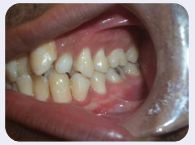
Figure 2: Preoperative right side.
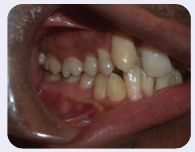
Figure 3: Preoperative presentation.
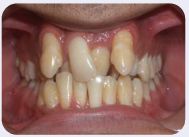
Figure 4: Preoperative maxilla.
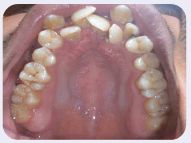
Figure 5: Preoperative mandible.
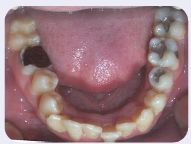
LEARNING GOALS AND OBJECTIVES
- To recognize the need for a multidisciplinary approach to treatment—specifically, the need for periodontal considerations prior to orthodontic and prosthodontic treatment
- To understand the need for proper tooth alignment
- To understand the influence of periodontal health on restorative outcomes
Medical History
- No significant findings
Review of Systems
- Vital signs:
- Blood pressure: 110/72
- Heart rate: 68 beats/minute
- Respiration rate: 15 breaths/minute
Significant Intraoral Examination Findings
- Gingival inflammation and recession, especially in the maxillary anterior region
- Retained maxillary left primary lateral incisor (G)
Figure 6: Full mouth series of radiographs.
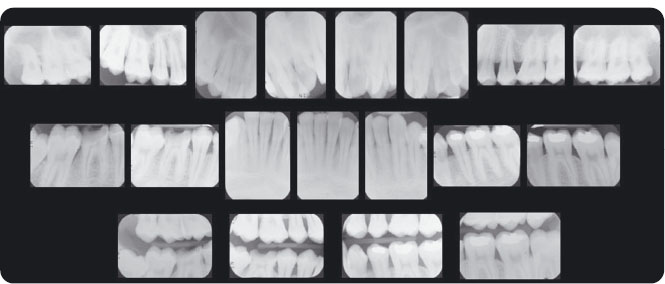
Radiographic Findings
Clinical Findings/Problem List
- Caries:
- Maxillary right second molar (2) O
- Maxillary right first molar (3) O
- Maxillary right second premolar (4) O
- Maxillary right first premolar (5) O
- Maxillary left second premolar (13) O
- Maxillary left first molar (14) OL
- Maxillary left second molar (15) OL
- Mandibular right first molar (30) O (recurrent)
- Mandibular right second molar (31) O
- Retention of primary teeth
- Severe anterior crowding and cross-bite
- Periodontal condition
- Fair oral hygiene
- Chronic generalized moderate periodontitis
- Localized severe periodontitis (mandibular anterior region)
- Vertical bone defects in the following areas
- Mandibular left second molar (18M)
- Mandibular right second premolar (29D)
- Mandibular right second molar (31M)
- Occlusion
- Class I molar occlusion
- Class II canine malocclusion Charting
Diagnosis
- Caries
- Chronic localized moderate periodontitis
- Severe anterior crowding and cross-bite
Clinical Decision-Making Determining Factors
- When treating a patient with complex aesthetic challenges, a multidisciplinary approach is often necessary. With the help of the orthodontist, the periodontist, and the prosthodontist, a treatment plan can be developed for all stages of treatment. Diagnostic wax-ups and mock composite restorations can usually be created to guide the clinicians in their treatment. However, in more complex cases, a simple diagnostic wax-up is not possible. This presents a great challenge for the overall vision of the treatment plan. To address this challenge, models can be created and manually sectioned, and teeth can be measured and replaced in more ideal positions; or digital models can be created with the help of computerized measuring systems. These techniques can facilitate interdisciplinary communication and treatment planning (Kuo and Miller 2003; Sandler, Sira et al. 2005; Waldman 2008).
- Several parameters have been typically discussed in evaluation of anterior aesthetics. These parameters include incisal edge show, profile and lip support, midline, la/>
Stay updated, free dental videos. Join our Telegram channel

VIDEdental - Online dental courses


